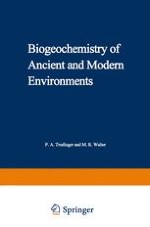1980 | OriginalPaper | Chapter
Leaching of Copper-Bearing Mineral Substrates with Wild Microflora and with Laboratory-Bred Strains of Thiobacillus Ferrooxidans
Author : Stoyan Groudev
Published in: Biogeochemistry of Ancient and Modern Environments
Publisher: Springer Berlin Heidelberg
Included in: Professional Book Archive
Activate our intelligent search to find suitable subject content or patents.
Select sections of text to find matching patents with Artificial Intelligence. powered by
Select sections of text to find additional relevant content using AI-assisted search. powered by
At the present time the biological leaching of copper is applied on industrial scale in several ways: mainly as dump and heap leaching of mining wastes, and more rarely, as underground leaching of low-grade ore material in situ. Nevertheless, in all cases the leaching processes are carried out by the respective indigenous microflora. The latter includes wild strains of various microorganisms but the most important role in leaching is played by the chemolithotrophic bacterium Thiobacillus ferrooxidans (Trudinger, 1971; Corrans et al., 1972; Rossi, 1974; Groudev et al., 1978a). Its activity can be enhanced by an artificial improvement of some of the rate-limiting environmental factors, and, nowadays, this is the one and only applicable way to increase bioleaching under natural conditions. It must be noted, however, that a quite different way exists, at least theoretically: to “seed” leaching operations with laboratory-bred strains (or with wild strains taken from other ecosystems) possessing a leaching activity higher than that of the indigenous strains. That second way is closely connected with the problem of strain screening and improvement of T. ferrooxidans.
